Post by FOTH on Sept 19, 2011 8:10:49 GMT -6
Dakota fire hole for efficient cooking and minimal smoke signature
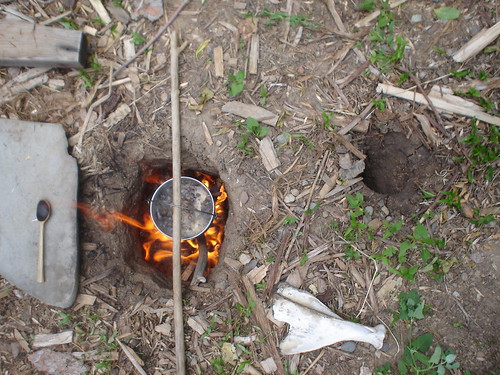
No wood fire is entirely smokeless. You can, however, greatly minimize and even very nearly eliminate your fire's smoke signature, with some effort.
One good way to do this is by using a Dakota fire hole. There are many variations on this method, but I'll demonstrate here the one I like best. You will need to dig a hole that is just over a foot deep, and no wider than that in diameter. The pit can be widened at the bottom to allow for longer pieces of wood. Then dig a small tunnel beginning a foot or so from the main pit and angling down to the bottom of it. This will allow additional air to be drawn through and help the fire to burn hotter and more efficiently, producing less smoke.
If you can, put the air tunnel on the side of the pit from which the prevailing winds in the area come, as this will help to fan the fire. Even this is not possible because of terrain limitations (as it was not for this demonstration) the setup should work quite well.
For your fire, start with very dry wood, preferably long-dead branches, still attached to the tree, which have been protected from moisture by the boughs above them. Remove all bark, as most barks do not burn completely and tend to smoke, and split your kindling very finely. I put three rocks down in the pit to build the fire on top of, so they can heat for later use (cooking or keeping in pockets, etc, for warmth) after fire is out.
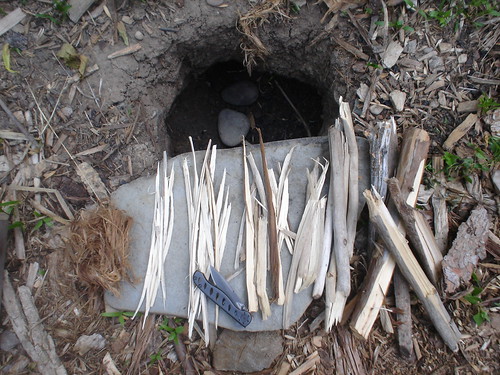
All set up and ready to strike. This is split aspen wood from a standing dead tree, along with a small amount of juniper. I added a bit of milkweed down, surrounded by a wad of shredded juniper bark, to catch the spark. It is difficult to see in this photo, but there is a shallow trench in the bottom of the firepit (that the rocks are in) which lines up with the air tunnel. This both helps to draw air through, and allows you to place wood flat on the bottom of the pit, while still allowing air under it.
The hole is approximately twelve inches in diameter, widened out around the bottom to accept larger pieces of wood. By keeping it small at the top, you maximize efficiency and also make it easier to quickly cover the hole with a flat rock, if you have a sudden need to eliminate the fire and reduce your heat signature...:eek:

Fire took on the first strike, using a firesteel and length of old dulled hacksaw blade. This is the most smoke it ever produced, and that only for a moment, until it began drawing air through the tunnel.
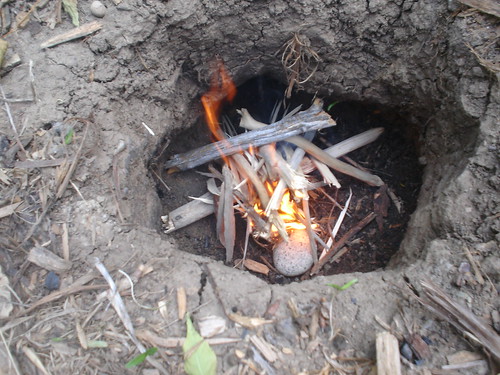
Looking in through air tunnel:
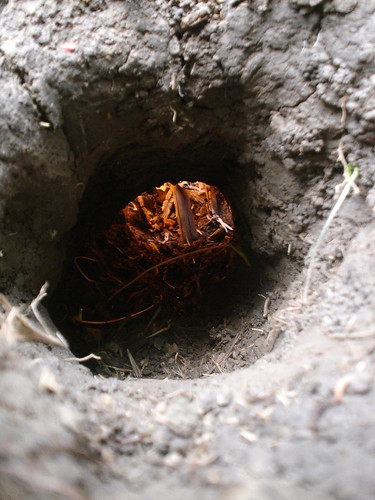
Firehole and tunnel. I dug the hole with that deer shoulder bone and a sharpened juniper stick, for the tunnel.
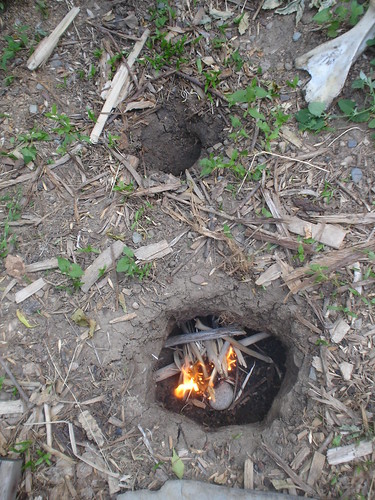
Starting the water heating. The firehole is a very efficient and quick way to bring water to a boil for purification, and makes a great cooking "stove," also! By angling firewood so part of it ends up in the tunnel, you can use longer pieces than you would otherwise be able, in this small 12 inch diameter hole.

Slide the rock partway over the pit to help keep the heat in and boil your water more quickly. Also provides a cooking/heating surface, if you need it. Just after this, I added some spring beauty and waterleaf roots that I had recently dug in a nearby alpine meadow.
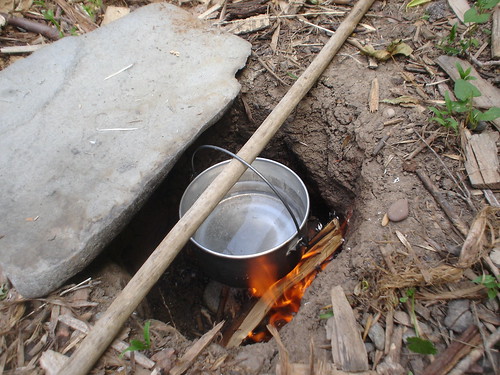
Boiling away! I boiled my little "potatoes" for about ten minutes.

Improvised juniper-bark pot lifter...
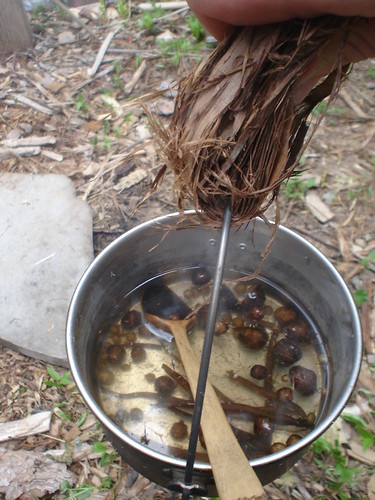
All done, and still no smoke!
Fire is intentionally kept very small at all times. This should help minimize the amount of light that escapes, at night.
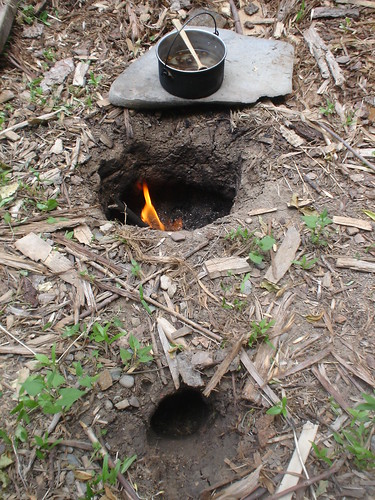
Ready to eat! Just after this I slid the large rock over the hole, and a smaller one over the tunnel opening, to cut off the air and let the fire die out with minimal smoke. If you get a tight seal between the ground/rock, no smoke escapes. If you have not been able to find a rock of just the right size, keep a little pile of dirt and small rocks handy to quickly toss over and close the gaps, sealing in the smoke of the dying fire.
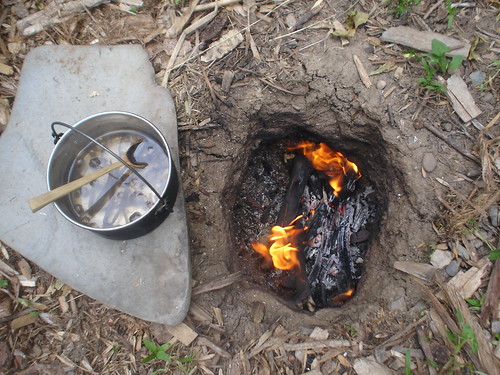
Spring beauty corms--just like mashed potatoes, in both taste and texture. I eat skins and all. Very good! The waterleaf roots are not bad, either--nearly tasteless, but starchy and filling.

You can of course keep the fire going while you eat if it's cold weather, but if the idea is to quickly cook up a hot meal or purify some water with minimal smoke and heat signature, you'll want to put it out as soon as possible. In that case, keeping your pot on the rock while you eat helps keep your food warm, and you can always sit on the rock afterwards (check to make sure it's not too hot!) for warmth.
And don't forget those three rocks that are down in the bottom under the ashes, very hot by now. They can be fished out and used to help keep you warm, or even used for additional cooking (dropped into water to heat it,) maximizing the use you get out of this one small, quick fire.

